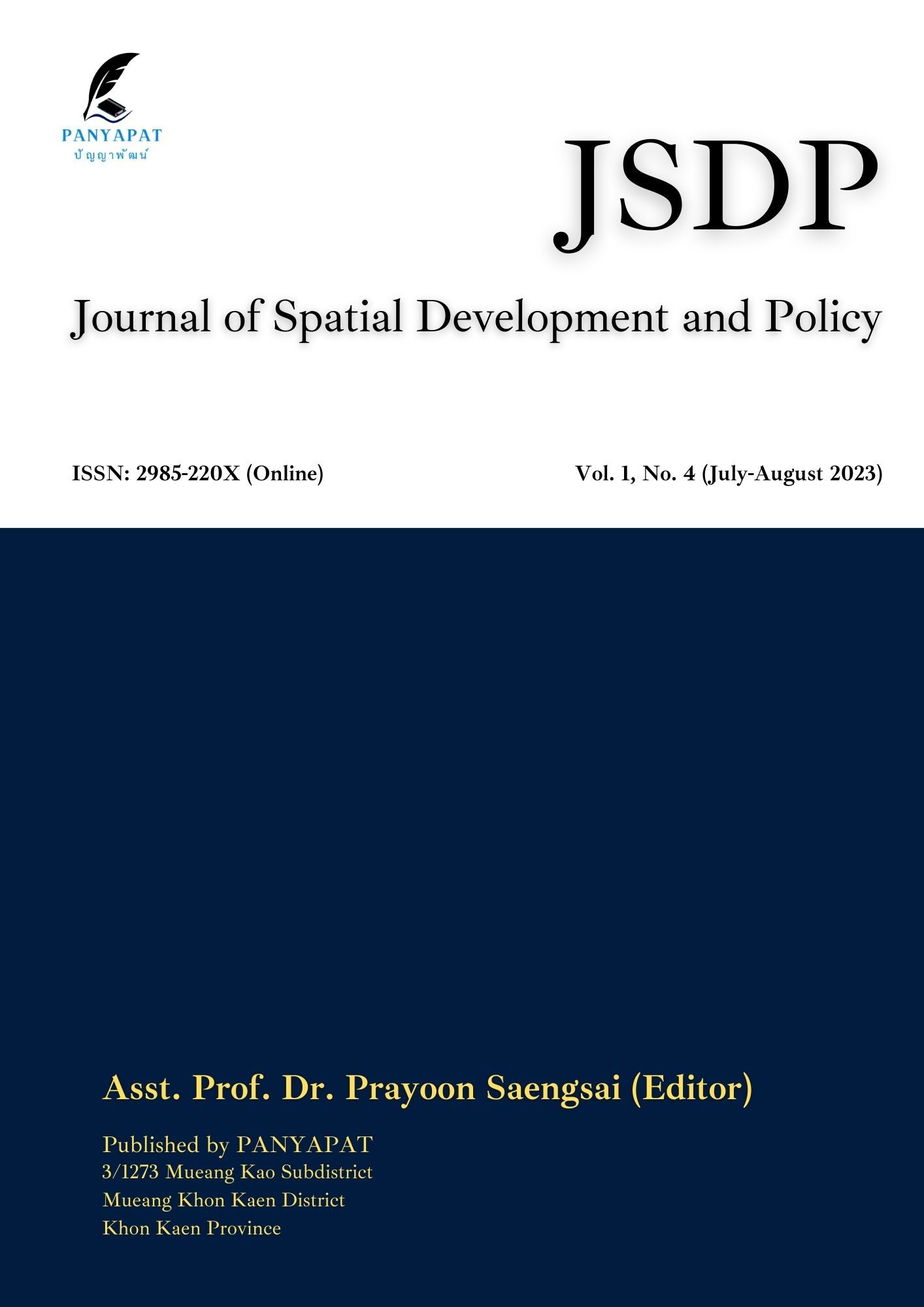Development of a Chatbot for Student Loan Services in Khon Kaen University
Main Article Content
Abstract
The objectives of this research article are (1) to design and develop a Chatbot for student loan services for student loans (SLF) in Khon Kaen University (2) to study the level of expectations in designing and developing a Chatbot of staff members. Student services regarding student loans (SLF) and students borrowing money for education (SLF) in Khon Kaen University and (3) to study the level of satisfaction of staff and students who borrow money for education. (Student Loan Fund) towards Chatbot for student services regarding student loans (Student Loan Fund) in Khon Kaen University. This research used a quantitative research method. Using a questionnaire as a research tool. The target group is Chatbot service users, including Student Development Division staff. Student Loan Service Department (SLF), Khon Kaen University and 365 students who borrow money for education (SLF), Khon Kaen University. The results of the study found that Chatbot can reduce the workload of officials. and can provide comprehensive services to students who borrow money for education within a short time, however, Chatbot for student services Borrowing money for education Still unable to respond to complex student questions Because Chatbot's work is like helping. and lighten the workload of officials It is not a replacement for staff. This is a Chatbot for student services. In the area of student loans that have developed, there is the highest level of expectation for the design and development of Chatbots. And satisfaction with Chatbot is also at the highest level.
Article Details

This work is licensed under a Creative Commons Attribution-NonCommercial-NoDerivatives 4.0 International License.
References
กัลยา วานิชย์บัญชา. (2551). การวิเคราะห์สถิติ สถิติสําหรับบริหารและวิจัย. (พิมพ์ครั้งที่ 11). กรุงเทพฯ: โรงพิมพ์จุฬาลงกรณ์มหาวิทยาลัย.
พิชชาพร คำทำ, และ ประศาสตร์ บุญสนอง. (2564). แชทบอทสำหรับการบริการข้อมูลด้านสุขภาพ. ใน การประชุมวิชาการเสนอผลงานวิจัยระดับชาติด้านวิทยาศาสตร์และเทคโนโลยี ครั้งที่ 4 (หน้า 39-44). พิษณุโลก: คณะวิทยาศาสตร์ มหาวิทยาลัยนเรศวร.
เพ็ญแข แสงแก้ว. (2541). การวิจัยทางสังคมศาสตร์. (พิมพ์ครั้งที่ 3). กรุงเทพฯ: มหาวิทยาลัยธรรมศาสตร์.
วิสิฏฐา ชุนสิทธิ์ และ รังสรรค์ เกียรติ์ภานนท์. (2564). การออกแบบแชทบอทให้บริการลูกค้าเพื่อรองรับการขยายตลาดด้วยการตลาดดิจิทัล กรณีศึกษา บริษัท ฟอร์มูลา ทีเคดี จำกัด. วารสารมหาวิทยาลัยราชภัฏมหาสารคาม, 15(3), 107-120.
สุมนา บุษบก, ณัฐพร เพ็ชรพงษ์ และ จีรนุช สิงโตแก้ว. (2563). การพัฒนาแอปพลิเคชัน Chatbot สําหรับงานบริการนักศึกษากรณีศึกษากองพัฒนานักศึกษา มหาวิทยาลัยเทคโนโลยีราชมงคลสุวรรณภูมิ. วารสารวิจัยมหาวิทยาลัยเทคโนโลยีราชมงคลธัญบุรี, 19(2), 85-94.
สุรชาติ บัวชุม และ ภัทรมน กล้าอาษา. (2563). การพัฒนาแอปพลิเคชันในรูปแบบแชทบอทบริการแนะนำสถานที่ท่องเที่ยวโดยเชื่อมโยงข้อมูลกับผลิตภัณฑ์ชุมชน จังหวัดชัยนาท. วารสารบัณฑิตวิทยาลัย มหาวิทยาลัยราชภัฏจันทรเกษม, 17(1), 51-62.
Conbach, Lee J. (1974). Essentials of Psychological Testing. New York: Harper and Row.
Krejcie, R.V., & D.W. Morgan. (1970). Determining Sample Size for Research Activities. Educational and Psychological Measurement. 30(3), 607–610.
Okeke, K. (2017). 5 Ways Businesses Will Benefit from Chatbots. Retrieved 2 January 2023. from https://chatbotslife.com/5-ways-businesses-will-benefit-from-chatbots887057abfcb6.
Suthar, S. (2017). How Chatbots Help Businesses Improve Customer Service. Retrieved 2 January 2023. from https://chatbotsmagazine.com/how-chatbot-helps-businesses-improvecustomer-service-121530ebe60f.
Tan, W. K. (2017). The relationship between smartphone usage, tourist experience and trip satisfaction in the context of a nature-based destination. Telematics and Informatics, 34(2), 614–627.

